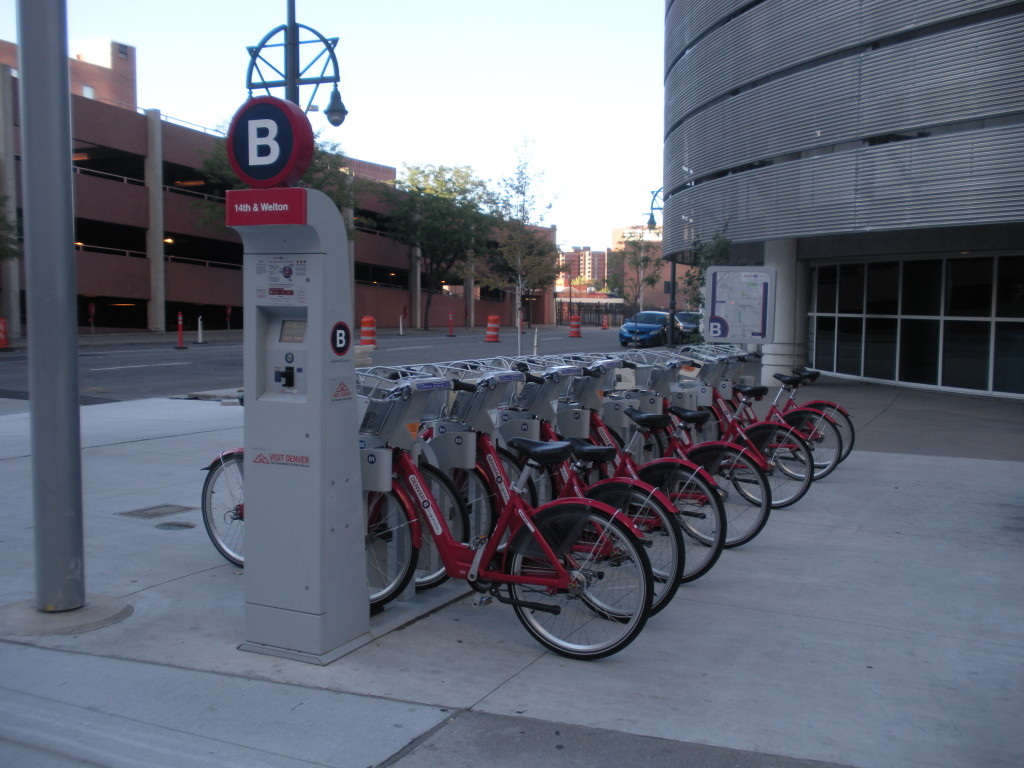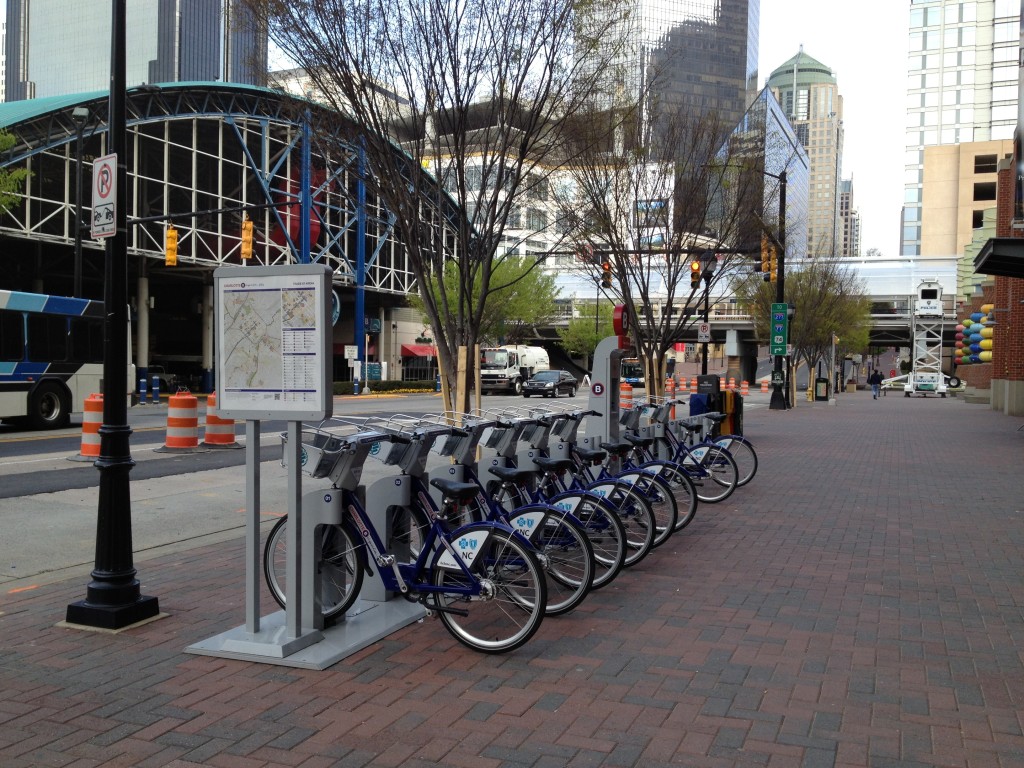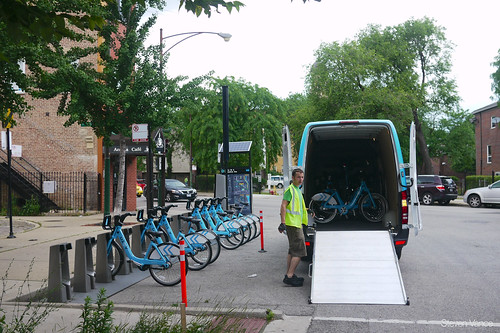 Most major cities have implemented some level of bike sharing programs in their community. And based on usage reports, these programs have shown to be well received by people in these communities. The idea behind the setup is fairly simple: install bike docking stations at key locations through a city and allow people to rent the bikes using self-pay kiosks. Users pick up the bikes from one station and deliver them to another near their destination. The result is a convenient and relatively low-cost transportation alternative that does not add to existing congestion levels.
Most major cities have implemented some level of bike sharing programs in their community. And based on usage reports, these programs have shown to be well received by people in these communities. The idea behind the setup is fairly simple: install bike docking stations at key locations through a city and allow people to rent the bikes using self-pay kiosks. Users pick up the bikes from one station and deliver them to another near their destination. The result is a convenient and relatively low-cost transportation alternative that does not add to existing congestion levels.
Setting up the program can be easier than planning and constructing more traditional infrastructure. They key is to determine station locations and number of docks/bikes per station depending on expected demand. Choosing a location where there is already room for a station such as along an existing sidewalk can also cut costs and installation times. For an optimum layout, it’s also a good idea to plan stations in a manner similar to transit station layouts with a type of grid system that allows for pedestrian trips less than 10 to 15 minutes. All of this is probably fairly obvious to transportation professionals. But as with most public works services, the critical, and sometimes unforseen, component is in the operations. In bike sharing, the success of the service relies on the ability to manage the number of bikes at each station.
The service level for users diminishes when no bikes are available to meet demands. And this is also true when users cannot find spaces to return bikes at stations near their destinations. This operational challenge has been studied in several papers. One more recently released paper, Dynamic vehicle redistribution and online price incentives in shared mobility systems indicates the main costs of operations, which have been reported at $1,200 to $1,944 per bike annually, are also dependent on this need to balance the number of bikes between stations. Following is an excerpt from the report:
“One of the major contributors to operational costs is the need to operate staffed trucks for manual relocation of bicycles, in order to balance the difference between supply and demand at various stations. If this effort were not made, the arrival and departure of customers would cause many stations to run full or empty, and the customer service rate would drop below acceptable levels.”
So to run well throughout the day, the program relies on an operator and staff to constantly monitor the number of bikes at each station and pick up and deliver bikes as needed between them. Below is a photo showing a van peforming this pickup/delivery for the Divvy bike sharing system in Chicago (Source: Steven Vance, Flickr).
And to cut costs, some studies have suggested offering incentives to riders for delivering bikes where they are most needed. This would seem simple to implement because many stations and systems are digitally monitored. So users can easily determine the number of bikes at a station using apps such as CycleFinder. Incentives could be offered once a station hits a certain level and then trigger the app to display an icon through these programs alerting users to the incentive. Some studies have suggested that incentives could eliminate the need to manually balance bikes on the weekend. However, during the week when there is heavy commuter use, manual balancing would still need to take place.
For those interested in learning more about bike sharing programs, here are some additional resources and information:



Operational costs of $1200 to $1944 per bike? It would be cheaper to simply buy a new bike and lock for everyone who signs up. Programs like this are why cities like Detroit are going bankrupt. They feel good but ripping off the majority of tax payers to subsidize programs benefiting a small number of relatively affluent young professionals is wrong morally and foolish economics.
@Pam – I used DC’s bike sharing program for the first time a couple months ago. It was fine and I appreciated the chance to take a bike vs. a cab or my own car, attempt to find parking, be one less car on the road for traffic / emissions, etc. The only troublesome part, which ties to your post, was that I didn’t know exactly where the next station was located, so I just set the bike outside of the store vs. returning it and giving someone else the chance to use it while I conducted my business. I’d recommend having a built -in GPS or an app that allows me to see both my intended destination as well as the closest bike share station. Maybe they have something like this and I just wasn’t aware of it…but that would be my biggest reason for not using it again.
@Andy – there are many phone apps that you can use to accomplish that goal! Also, @Pam – you may be interested to checkout my blog post on the subject here!
@Samantha – That was a great post about bike sharing – I think you had also included a link to some stats that were useful
@Andrew – In the post, there should be a link to one of the apps I have on my iPhone called CycleFinder. But I think Samantha is right – there are several out there. I think I also have the one for BCycle too. If I didn’t know about these, I’d be worried to take a bike because I could not be sure I could return it. And I guess even with the app you never know how demand will go. If all the stations in a popular area were full you might get stuck walking really far. I’m hoping to get a chance this week to try out Chicago’s new system.
@Peter – I was surprised at how many studies are out there about how to optimize the balancing and was wondering if it was a deliberate effort to see if there is a way to get that price down. But perhaps bike sharing is just one of those services cities offer and subsidize to improve the quality of life. And the acceptance of this cost depends on the community’s philosophy towards the service.